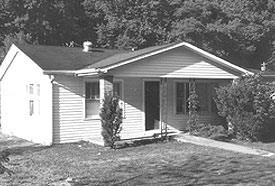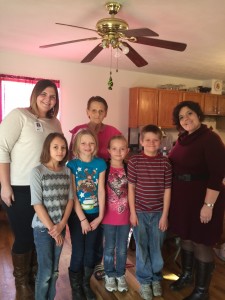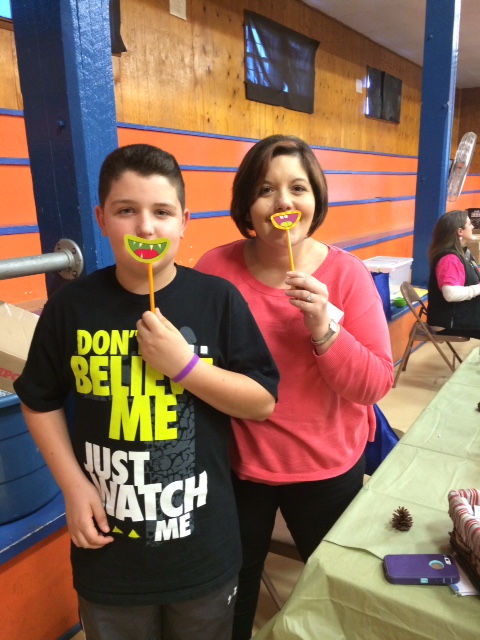|
Health Outreach Partners https://outreach-partners.org/2015/01/documenting-enabling-services-to-improve-workflow-and-show-success/ Export date: Sat Apr 20 13:20:04 2024 / +0000 GMT |
Documenting Enabling Services to Improve Workflow and Show SuccessCommunity Health Center: White House Clinics (WHC) | Richmond, Kentucky Contact: Heidi Kurgat, Enabling Services Line Manager | http://www.whitehouseclinics.com/ 1  White House Clinics was founded in 1973 in this white dwelling house in McKee, Kentucky by Dr. Phil Curd. Dr. Curd had recently finished a stintwith the PeaceCorps and moved to Kentucky to provide health care to residents of Jackson County, Kentucky. In 2014, White House Clinics now has 8 locations, serving over 30,000 patients in 2014. White House Clinics was founded in 1973 in this white dwelling house in McKee, Kentucky by Dr. Phil Curd. Dr. Curd had recently finished a stintwith the PeaceCorps and moved to Kentucky to provide health care to residents of Jackson County, Kentucky. In 2014, White House Clinics now has 8 locations, serving over 30,000 patients in 2014.Enabling services are non-clinical services provided by health centers that aim to increase access to health care and improve health outcomes. These services can include case management, health education, eligibility assistance, outreach, transportation, and interpretation. There are many benefits to offering enabling services, including:
April Ryan, Case Manager, poses with a 4th grade student at the Oral Health education event in Jackson County, Kentucky. Health centers face many challenges in providing enabling services. First, these services are not adequately funded or reimbursed. Second, health centers do not collect or report standard data, which makes it difficult to understand the similarities and differences of how these services are implemented across the country. To address these challenges, the Association of Asian Pacific Community Health Organizations (AAPCHO) created an Enabling Services Data Collection (ESDC) protocol. This protocol allows health centers to track enabling services in order to analyze patient demographics, enabling services utilization, and the impact of enabling services on patient outcomes. This data can then be used to advocate for funding and resources to support the provision of enabling services. In 2010, a social worker at White House Clinics (WHC) in Kentucky began implementing the ESDC protocol to show the value of her work. She began by using paper encounter forms to document the enabling services she provided but later used the health center’s electronic medical record (EMR) system. Over time, the health center decided to expand the protocol to care coordinators, outreach and enrollment staff, referral clerks, and financial counselors. The health center also restructured these staff positions into the same department. What began as a single social worker trying out a new protocol to document her work turned into nearly 20 staff members documenting the enabling services they provide at the health center.  April Ryan and Chelsea Cunagin, WHC Case Managers, provided furniture from community resources to a great grandmother who has custody of her four great grandchildren. All are patients at White House Clinic - Berea. Here are some of the key lessons learned in the process:
Members of the White House Clinics staff assist with sorting food at a local food bank in Mt. Vernon, Kentucky. For a guide on how to implement the Enabling Services Data Collection protocol at your health center, go to:http://www.aapcho.org/resources_db/enabling-services-data-collection-implementation-packet/ 2. AAPCHO, HOP, and National Health Care for the Homeless Council (NHCHC) provide training and support to health centers in implementing this protocol. |
| Excerpt: White House Clinics was founded in 1973 in this white dwelling house in McKee, Kentucky by Dr. Phil Curd. Dr. Curd had recently finished a stintwith the PeaceCorps and moved to Kentucky to provide health care to residents of Jackson County, Kentucky. In 2014, White House Clinics now has 8 locations, serving over 30,000 patients in 2014... |
Links:
|
|
Post date: 2015-01-05 15:47:41 Post date GMT: 2015-01-05 15:47:41 Post modified date: 2022-12-08 09:16:47 Post modified date GMT: 2022-12-08 17:16:47 |
|
Export date: Sat Apr 20 13:20:04 2024 / +0000 GMT This page was exported from Health Outreach Partners [ https://outreach-partners.org ] Export of Post and Page has been powered by [ Universal Post Manager ] plugin from www.ProfProjects.com |

 Implementation is a process of trial and error: start small and build over time. The protocol requires a pilot phase before full implementation. The pilot provides the opportunity for making a standardized protocol work in a specific setting. In the case of WHC, the social worker piloted the protocol over the course of a year and a half. Even after the pilot, staff at WHC found that they continue to refine the process on an ongoing basis.
Implementation is a process of trial and error: start small and build over time. The protocol requires a pilot phase before full implementation. The pilot provides the opportunity for making a standardized protocol work in a specific setting. In the case of WHC, the social worker piloted the protocol over the course of a year and a half. Even after the pilot, staff at WHC found that they continue to refine the process on an ongoing basis.